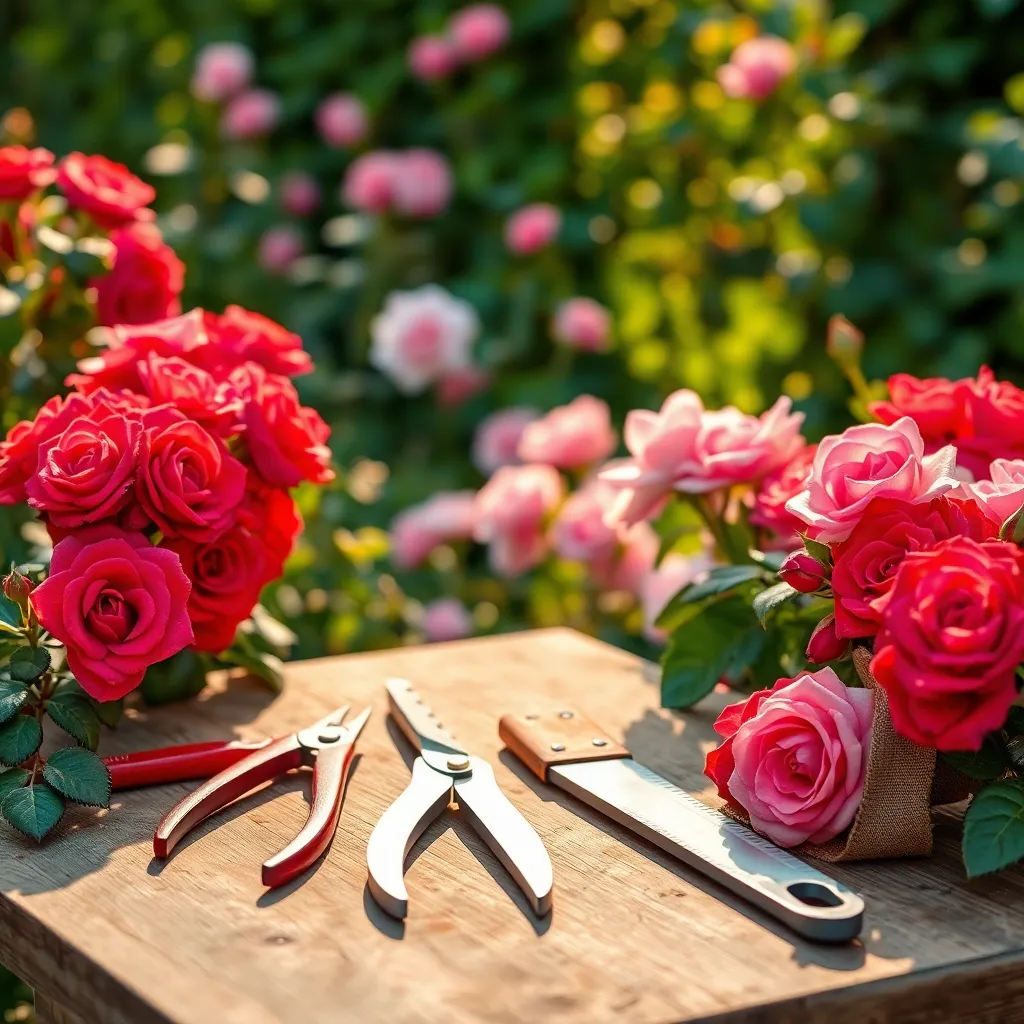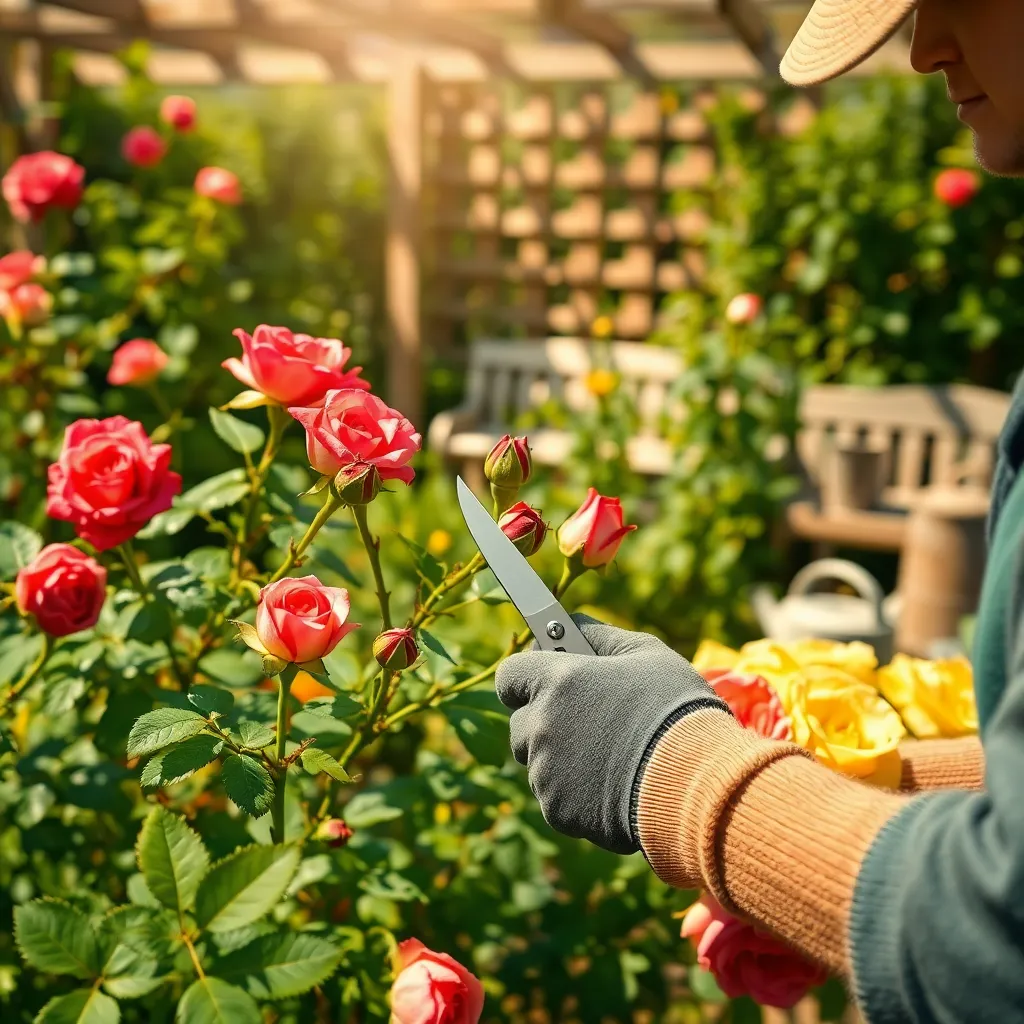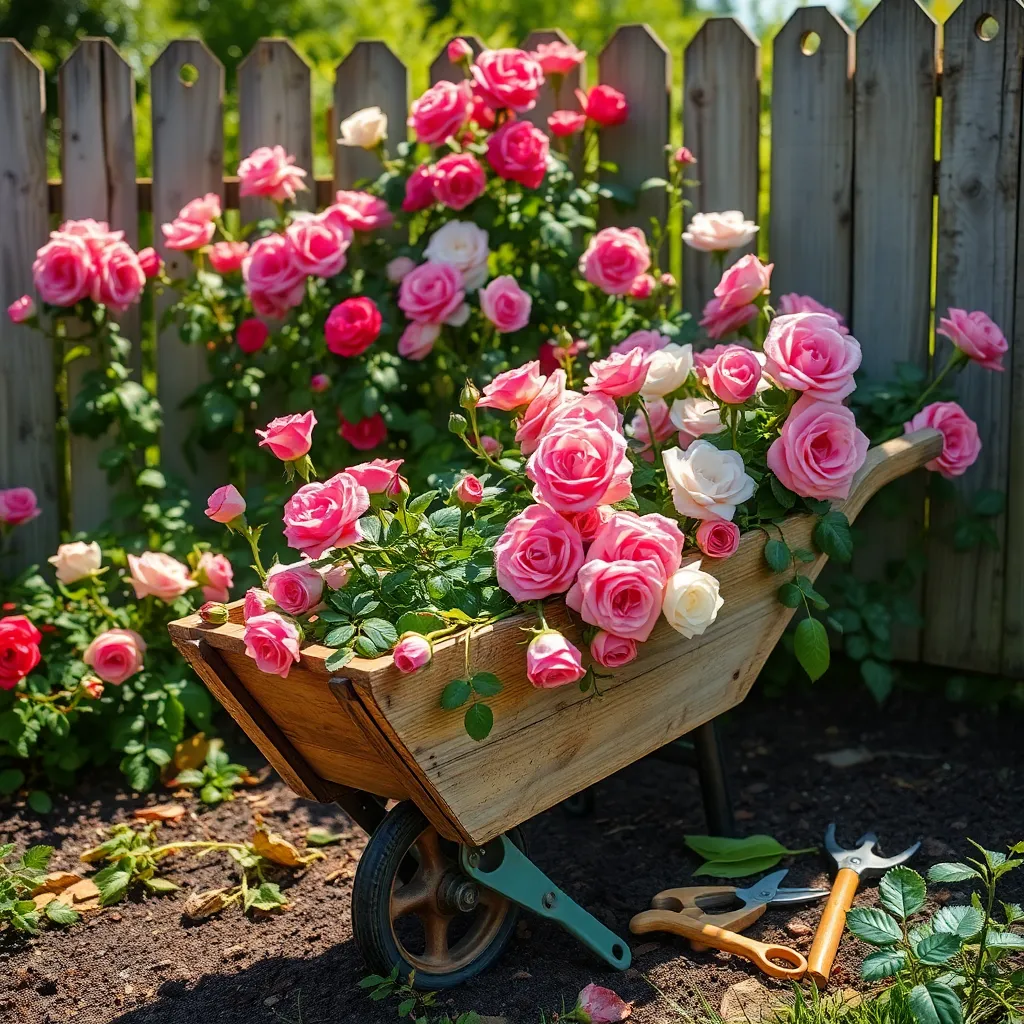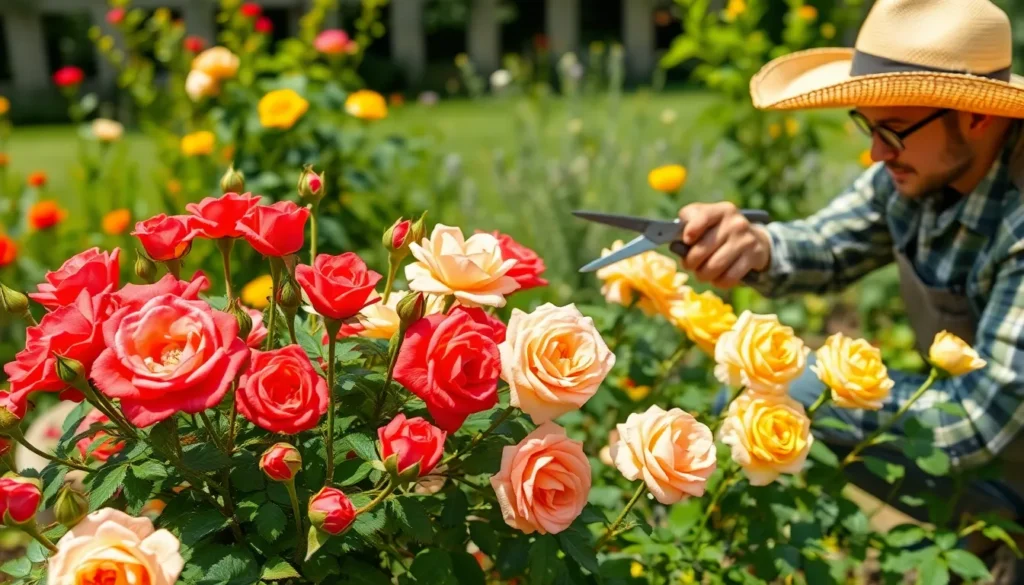There’s a certain magic to a well-tended rose bush, its blooms unfurling in a vibrant display that can transform any garden into a personal Eden. Whether you’re just starting your gardening journey or have years of experience with soil under your nails, understanding how to prune roses properly is a crucial skill that can make all the difference in your garden’s health and beauty.
Pruning, when done correctly, is like giving your roses a gentle nudge toward their full potential—encouraging robust growth and more prolific flowering. In this article, you’ll discover the essential tools and techniques for pruning roses, tailored to ensure your plants thrive season after season. Together, we’ll explore the timing and methods that suit different rose varieties, empowering you to cultivate a blooming spectacle in your outdoor sanctuary.
Gather Essential Pruning Tools

Before you begin pruning your roses, it’s essential to gather the right tools to ensure a clean and healthy cut. Start with a pair of high-quality bypass pruners, which are ideal for making precise cuts on live stems.
For thicker branches, you might need a pair of loppers, which offer more leverage and power. Ensure these tools are sharp to avoid crushing the stems, which can lead to disease.
It’s also wise to have a pair of gloves to protect your hands from thorns and scratches. Opt for gloves that are durable yet flexible enough to handle small stems and branches effectively.
Keep a small bottle of rubbing alcohol or a disinfectant handy to clean your tools between cuts. This practice is crucial in preventing the spread of diseases, especially if you’re working with multiple plants.
Identify Dead or Damaged Canes

In the process of pruning roses, one of the first steps is to identify dead or damaged canes. These canes can sap energy from the plant and should be removed for healthier growth. Look for canes that are brown or black, as these are often dead. A simple scratch test on the cane’s surface can reveal its health; green underneath indicates life, while brown suggests otherwise.
Healthy rose canes are typically green and firm to the touch. You’ll want to prune any that are weak or discolored, as they won’t support the plant’s growth effectively. Damaged canes often have cracks or other visible injuries. These should be pruned back to a healthy part of the cane to prevent disease spread.
Begin by cutting back dead canes to their base, allowing the plant to focus its energy on new growth. Ensure your pruning shears are sharp and clean to prevent any infection. For canes showing disease signs, such as black spots or mildew, dispose of them away from the garden to avoid contamination. This practice will help keep your rose bush vigorous and blooming beautifully.
For advanced gardeners, pay attention to the direction of the bud eyes when pruning. Cutting just above a bud eye facing outward encourages an open structure and good air circulation. Remember, roses thrive in well-drained soil and benefit from regular watering, especially during dry spells, to support the new growth after pruning. Applying mulch around the base can help retain moisture and keep roots cool.
Cut Back to Healthy Buds

Once you’ve identified the dead or damaged canes, it’s time to focus on cutting back to healthy buds. This step is crucial because pruning to a healthy bud encourages robust new growth and prevents disease. Look for buds that are plump and facing outward, as they will help shape a well-structured plant by promoting outward growth. Use sharp, clean pruning shears to make a clean cut about 1/4 inch above the bud, angled away from it to direct water runoff.
Avoid cutting too close to the bud, as this can damage the bud and hinder its growth. Ensuring that the cut is precise helps the plant heal faster and reduces the risk of infection. For beginners, it’s helpful to know that the best time to prune most roses is in late winter or early spring, just as new growth begins. In contrast, experienced gardeners might experiment with late summer pruning to control size and shape.
It’s important to consider the overall shape of the rose bush while pruning. Aim to create an open center to improve air circulation, which helps prevent fungal diseases. Remove crossing branches that can rub against each other and cause damage. In areas with high humidity, maintaining good air circulation is especially critical to keeping your roses healthy.
For those interested in advanced techniques, consider the soil and watering conditions that will support the newly pruned plant. Roses generally prefer well-draining soil with a pH between 6.0 and 6.8, and they thrive with consistent watering, especially during dry spells. Adding a layer of organic mulch can help retain moisture and regulate soil temperature, providing an ideal environment for your roses to flourish after pruning.
Shape the Rose Bush

Shaping your rose bush is essential for promoting a healthy structure and encouraging abundant blooms. Begin by assessing the overall shape and identifying any branches that disrupt the preferred form, such as those crossing or growing inwards.
Consider removing these problematic branches to open up the center of the plant and improve air circulation. This not only helps prevent diseases like powdery mildew but also allows sunlight to reach all parts of the bush.
When shaping, aim for a balanced and open vase-like structure, which is ideal for most rose varieties. This shape encourages strong growth and makes it easier to manage the plant throughout the growing season.
For advanced gardeners, experimenting with different shapes can also be rewarding. Try techniques such as “candelabra pruning” to create more vertical height, which can be particularly striking in formal gardens.
Clean Up Debris and Tools

Once you’ve shaped your rose bush, it’s essential to clean up any debris left behind. Gather fallen leaves and pruned stems around the base of the plant to prevent diseases such as black spot and mildew from taking hold.
Disposing of rose cuttings properly is crucial for maintaining plant health. Avoid composting diseased or insect-infested debris, as this can spread issues to other plants in your garden.
Maintaining your tools is just as important as caring for your roses. Clean your pruning shears and other tools with a solution of water and bleach (1:10 ratio) to disinfect them after each use.
Sharpening your tools regularly ensures clean cuts, which helps your roses heal faster. Invest in a good-quality sharpening stone or take your tools to a professional to keep them in peak condition.
Lastly, store your tools in a dry place to prevent rust, which can compromise their effectiveness. Consider using a tool rack or hooks to keep them organized and easily accessible for your next gardening session.
Conclusion: Growing Success with These Plants
In “How to Prune Roses Properly,” we explored five key relationship concepts: the importance of regular maintenance, knowing when to cut back, creating space for new growth, understanding individual needs, and fostering resilience through nurturing practices. These principles not only apply to horticulture but are essential in cultivating healthy, thriving relationships. By embracing the art of gentle pruning, you can prevent emotional entanglements and ensure your relationship blossoms beautifully.
As an immediate next step, take a moment to reflect on areas in your relationship that may benefit from a little careful trimming. Whether it’s setting aside dedicated time for each other, having open conversations about boundaries, or simply appreciating the beauty already present, small actions can lead to profound growth.
Remember, relationships are living entities that require ongoing care and attention. Bookmark this article to revisit these insights whenever you need guidance or inspiration. Let it serve as a reminder that with mindful effort, you can nurture a partnership that stands the test of time.
Looking ahead, by applying these principles, you’re laying the groundwork for a relationship that not only survives but thrives, flourishing with love and understanding. Take charge today and watch your relationship bloom.







